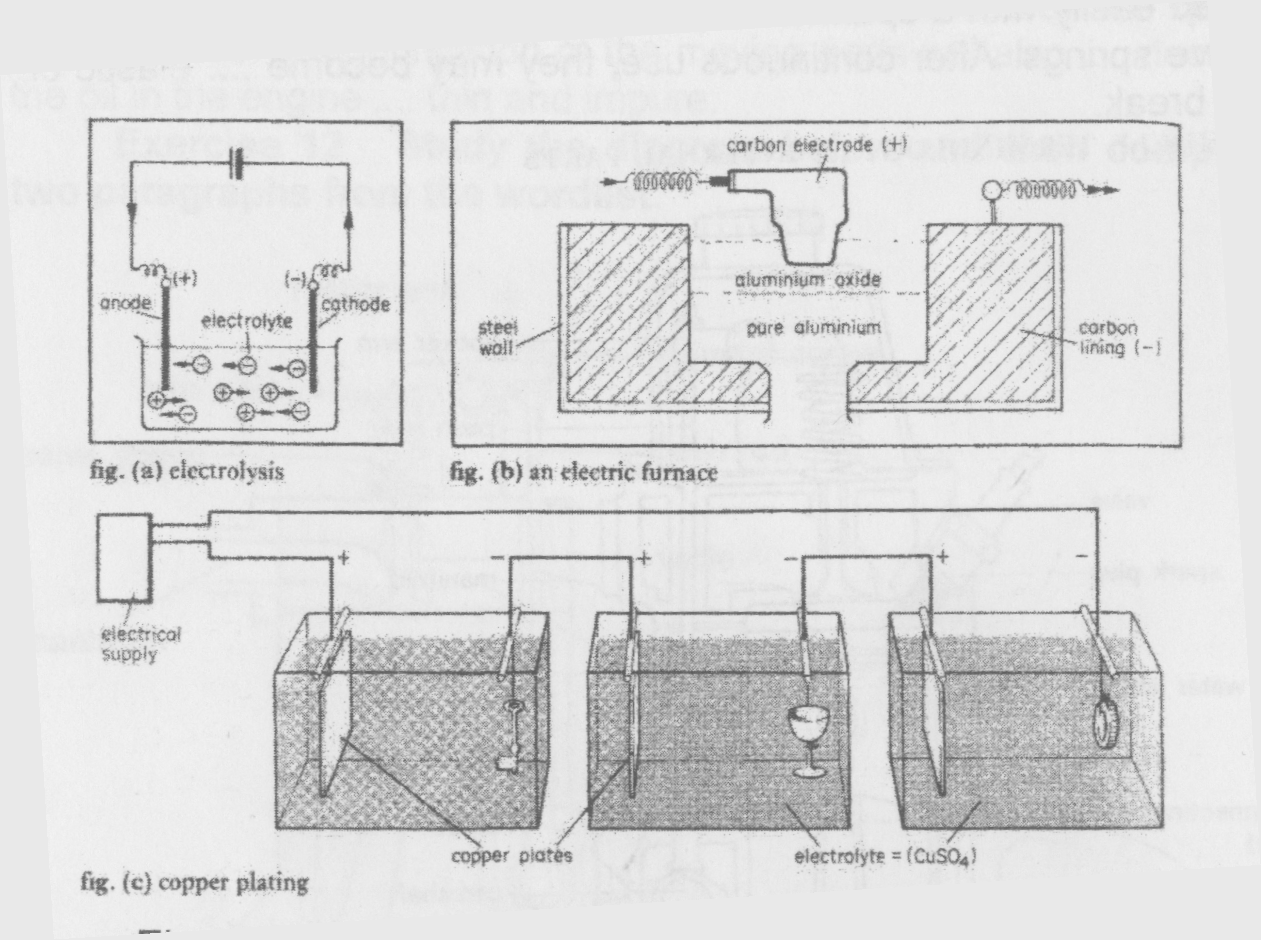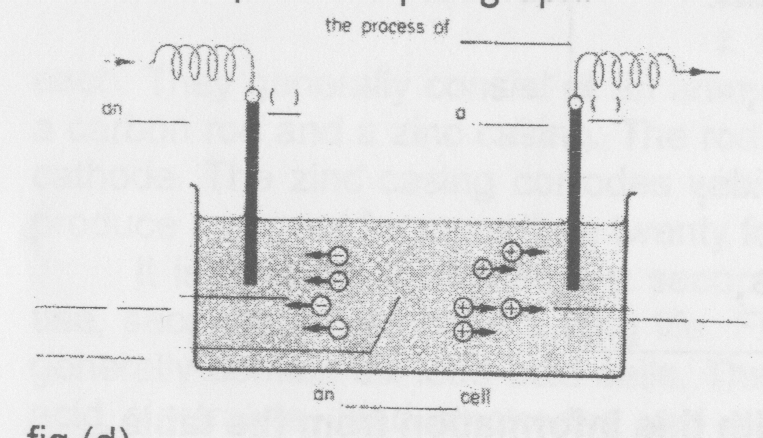
- •Section b gasoline (petrol) engines
- •Section c diesel engines
- •Section b water and its boiling point
- •C) molecules in motion
- •Section d engine-cooling system
- •Section b lubrication
- •Section c engine lubricating system
- •Section d filters
- •Unit four electricity Section a electrolysis
- •Uses of Electrolysis
- •Section b batteries
- •Section c automobile electric system
- •Section d battery-powered automobiles
- •Section b ferrous metals
- •Tensile strength and hardness section c
- •Section d aluminium bronze
- •Grammar exercises
- •Unit 1 advantages and disadvantages of diesel engines
- •Unit 2 comparative characteristics diesel and gasoline engines
- •Unit 3 basic parts of the automobile
- •Unit 4 where diesel engines are used
- •Unit 5 Temperature Regulators of Cooling System
- •In machihes and machinery.
- •Unit 8 the instruments in a car
- •Unit 9 Battery chargers
- •Vocabulary Список сокращений
- •Literature used
- •Contents
Unit four electricity Section a electrolysis
The Process of Electrolysis An electrolytic cell (fig. a) generally contains two electrodes. It always has a positive and a negative electrode. A positive electrode is called an anode, and a negative electrode is called a cathode. Electrolytic cells also contain an electrolyte. Electrolytes are usually liquids. They generally contain an acid. For example, a common electrolyte is sulphuric acid (H2S04) plus water.

Electrodes are generally made of metal. They conduct electricity into the cell. However, carbon is sometimes used for electrodes. The electrolyte conducts an electric current through the cell. Under normal conditions, both sulphuric acid and water conduct electricity.
A second cell provides the current. This current travels through the anode into the electrolyte. It produces ions in the electrolyte. For example, both water and sulphuric acid produce positive hydrogen ions. Electrodes attract ions. A negative electrode attracts positive ions, and a positive electrode attracts negative ions. This process is called electrolysis.
Uses of Electrolysis
Electrolysis is used for purifying certain metals (fig. b).
The electric furnace contains liquid aluminum oxide. The anode is made of carbon. The furnace wall has a carbon lining. This lining is the cathode. The electric current produces negative oxygen ions in the aluminum oxide. The carbon anode attracts these ions. The pure aluminum falls to the bottom of the furnace.
Electrolysis is also used for plating metal objects (fig. c). These cells contain copper salts. The anodes are copper plates. The cathodes are objects for plating. The salts provide positive copper ions. The cathodes attract these ions. The anodes dissolve slowly into the electrolyte. They provide more copper ions for plating the cathodes.
Exercise 1 Use the words in italics in the text to label the diagram and to complete the paragraph.

This figure shows the process of.... The .... cell contains two .... and a liquid .... The ctrode on the left is the ... . (+). The electrode on the
right is the .... (—). An travels through the .... from the ... . (+)
to the .... (—) The current produces .... in the .... The two .... attract these .... The .... ( + ) attracts the .... ions and the .... (—) attracts the ... ions.
Exercise 2 Complete these sentences with the correct verb. Make sure the verb is in the correct form. Each verb completes two sentences. Show attract contain conduct provide travel
An electrolytic cell generally .... two electrodes.
Carbon .... electricity.
Acids generally .... electricity.
An electric current.... through the electrolyte.
A second cell.... the current for the cell.
The electrodes .... the ions in the electrolyte.
Positive ions .... to the negative electrode.
Figs, (b) and (c).... two uses of electrolysis.
The carbon anode .... negative oxygen ions.
The cells in fig. (c).... copper salts.
The metal anodes .... more copper ions for plating the cathodes.
Exercise 3 Acids and salts are different types of compounds. They have different compositions. Examples: ACIDS
H2S04 (sulphuric acid) HCI (hydrochloric acid) HN03 (nitric acid)
SALTS
CuS04 (copper sulphate) ZnS04 (zinc sulphate) NaCI (common salt) Look at the information in this table.
Salts hydrogen molecules - no salts oxygen molecules - some salts molecules of a metal - all salts |
Composition of Acids
all acids,
some acids,
no acids, |
Now construct six sentences with this information from the table below.
An acid |
|
|
or |
always |
|
|
sometimes |
|
Acids |
|
contain |
A salt |
|
contains |
or |
never |
|
Salts |
|
|
LANGUAGE NOTES
Read and remember:
A knife-knives, a life-lives. Electricity-electric.
Electrolysis-electrolytic. Sulphur-sulphuric
Exercise 4 Check up whether you know the following words and expressions
A process, a furnace, a use, a lining, a plate, an object, a salt, plating, anodizing, information, composition, contain, provide, produce, travel, purify, fall, generally, called, plus(+), common, the bottom of, electrolysis, an electrolytic cell, an electric current, an electrode, an anode, a cathode, an ion, positive, negative
